
Number of species in the collection: 17.
Orders:
Desmarestiales (Desmarestia and similars)
Dictyotales (Usually tropical brown algae as Dictyota, Padina and similars)
Ectocarpales (Group with simple and filamentous brown algae)
Fucales (Group of Fucus and many common coastal algae)
Laminariales (Group of kelp, Laminaaria and some giant algae)
Tilopteridales (Group of Saccorhiza and similars)
Pictures of Phaeophyceae:
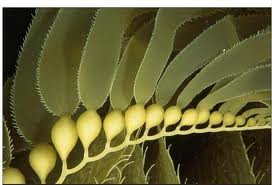
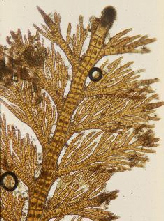
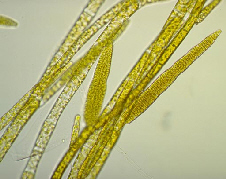
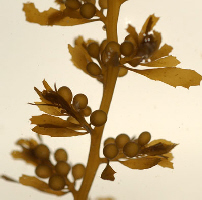
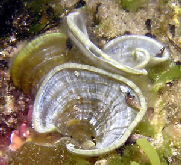
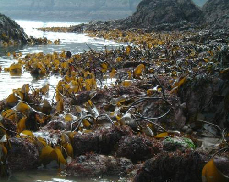
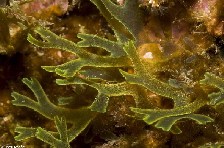
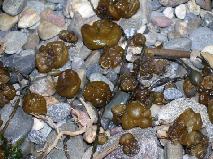
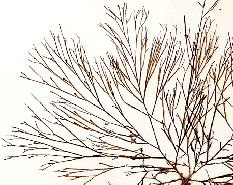
Characteristics of Phaeophyceae:
The Phaeophyceae
(which means brown algae) is a class of primarily marine algae with a worldwide
distribution, abundant in any coastal rocky area, especially in cold waters.
They are significant primary producers in certain ecosystems, as they can form
true underwater forests with individuals exceeding a hundred meters in length.
These algae typically exhibit brown colorations due to fucoxanthin, a brown
pigment that masks the green colour of chlorophyll. Within this group, there are
forms ranging from filamentous structures with a very simple and microscopic
structure to large algae with a relatively complex morphology and specialized
organs for specific tasks, these being the algae with the most complex
morphology. Their appearance varies from crusts or filaments to fans, branched
ribbons, bushes, or structures resembling a plant with stems, roots, and leaves.
Some species have gas vesicles that are used as flotation organs. They have
varied life cycles, typically with various morphologically distinct generations
necessary to complete the cycle. Spermatozoa with two unequal flagella are
characteristic.
Class: Phaeophyceae